30 October 2023
![]() 16 mins Read
16 mins Read
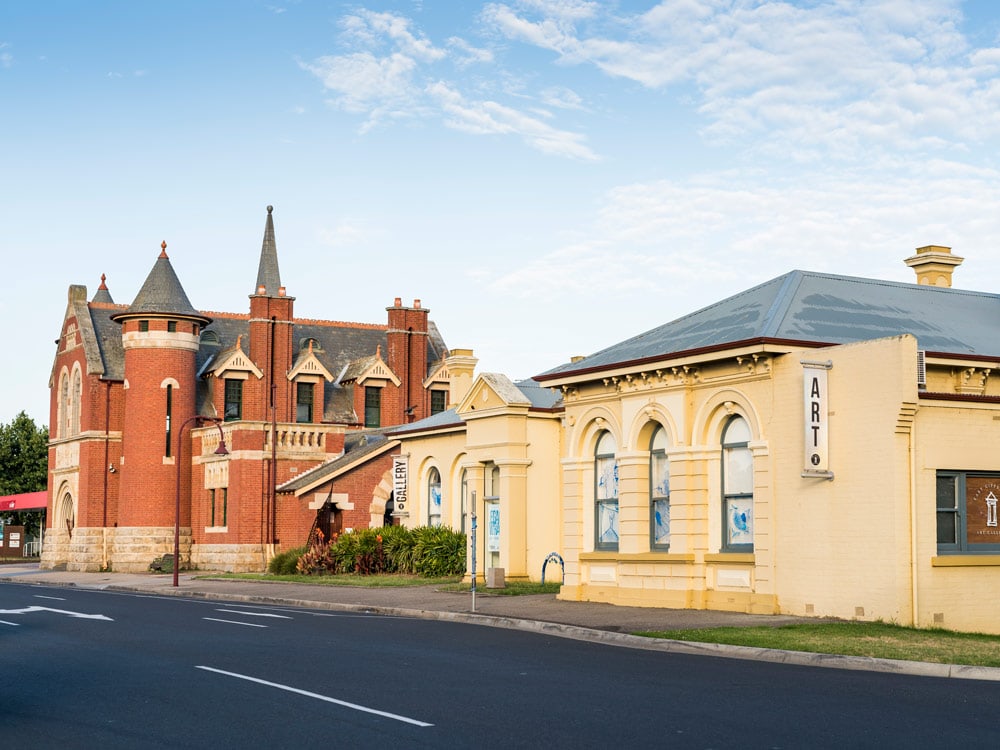
It’s raining when I arrive at the gates of Eden Equine in Bilpin, a 90-minute drive along the Bells Line of Road from Sydney. Considering what the town went through just a few days prior to Christmas 2019, I’m not complaining. That’s when the vicious Grose Valley Fire threatened to engulf this tiny hamlet of roughly 665, which is renowned for its apple and fruit orchards.
I’m bound for the newest addition to the property, a collection of five bespoke self-catering cabins, collectively known as Eden Farm Escape. The cluster of cabins that form the luxury farm stay are tucked at the back of the property, adjacent to a menageries of farm animals that includes chickens, goats, alpacas, donkeys and one very large rescue pig.
Heading inside, my two-bedroom cabin is a gracious proposition. The open-plan living area offers a generous lounge room for relaxing in, while the adjoining kitchen has a big dining table and all the elements necessary to whip up hearty country breakfasts or roast dinners. The bedrooms off the living space continue the cosy rustic theme, while the bathroom is rendered in an exuberant blue patterned ceramic.
It is tempting to do little more than sit and relax, looking out over the property through the floor-to-ceiling windows, but one of the joys of a stay here is the chance to take one of the resident horses out for a ride, so I head for the stables instead.
After a restful night engulfed in country silence, the next day is all about exploring Bilpin itself before heading home. I visit the family-run Shields Orchard, taking a basket into the rows of trees to pick my own crispy Granny Smith and sweet Julie apples.
Down the road, these same Julie apples are used to produce the sweet cider available at Hillbilly Cider Shed, where you can enjoy the wares while munching on a wood-fired pizza. My last stop is at the iconic Bilpin Fruit Bowl to grab one of its Pink Lady apple pies to go. As I am leaving Bilpin, the clouds above break and the sun shines through, as if promising that after such heartache, the future here is sure to be bright.
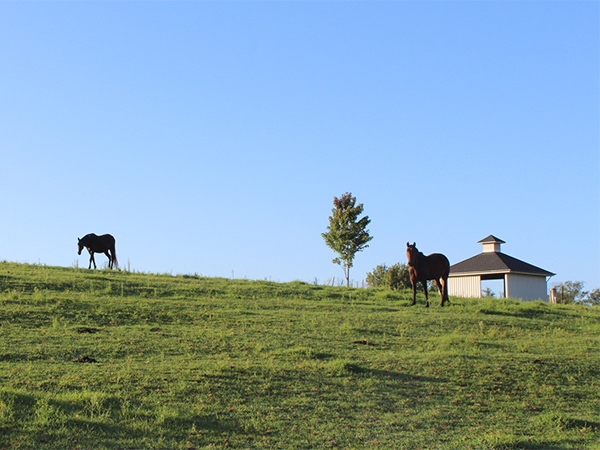
Take your pick at Bilpin. (Credit Leigh-Ann Pow)
Townsville will soon lay claim to the Museum of Underwater Art (MOUA), the only museum of its kind in the southern hemisphere. MOUA will act to highlight reef conservation, restoration and education on a global scale, sharing the stories of the region’s First Nations people and providing plenty of creative inspiration in the process.
The museum will comprise a series of four intriguing installations designed by world-renowned underwater sculptor Jason deCaires Taylor; its inaugural installation Ocean Siren is already located at The Strand on Townsville’s foreshore. It rises emblematically from the water and is modelled on Takoda Johnson, a young Indigenous girl from the Wulgurukaba tribe. An environmental conversation starter, the sculpture changes colour in response to live variations in water temperature.
The second installation, on the John Brewer Reef two hours’ boat ride from Townsville, is deCaires Taylor’s first-ever underwater building. Coral Greenhouse is populated with 20 ‘reef guardians’ that propagate the coral; the actual fabric of these sculptures is made up of stainless steel and pH-neutral materials, which instigate natural coral growth. The museum stands in the shallows, so you’ll be able to snorkel or dive to view it.
The remaining two installations, set for completion next year, will be located at Palm Island, some 65 kilometres out from the mainland, and at picturesque Arthur Bay at Magnetic Island.
Other Townsville highlights include the Reef HQ Aquarium which allows you to explore the Great Barrier Reef without getting wet; hiking Castle Hill, a heritage-listed pink granite monolith; the cafes along The Strand at Townsville’s beach foreshore; dinner at two of Townsville’s award-winning restaurants, Bridgewater and JAM Corner; and a swim at Little Crystal Creek, located an hour’s drive north out of town.

See Townsville in a whole new light.
Located in the NSW Central Tablelands, less than three hours’ drive from Sydney, Bathurst has much more to recommend it than just fast cars.
The historic Begonia House, located in the pretty surrounds of Machattie Park in the heart of town, is filled with a stunning show of flowers that are a joy to behold.
The Australian Fossil and Mineral Museum houses the internationally celebrated Somerville Collection, including a complete Tyrannosaurus rex skeleton.
Bathurst is filled with stunning heritage buildings, many of which you can experience at close quarters: book a stay at Alfred on Keppel, a lovingly restored heritage terrace house; tour Abercrombie House, built in the 1870s; and visit Chifley House, the former home of Australian Prime Minister Ben Chifley and his wife Elizabeth, left as the couple would have known it in the 1940s.
Drive through stunning countryside to reach the nearby gold rush towns of Hill End and Sofala; explore the impressive Abercrombie Caves Nature Reserve; and take the walking track to Grove Creek Falls.
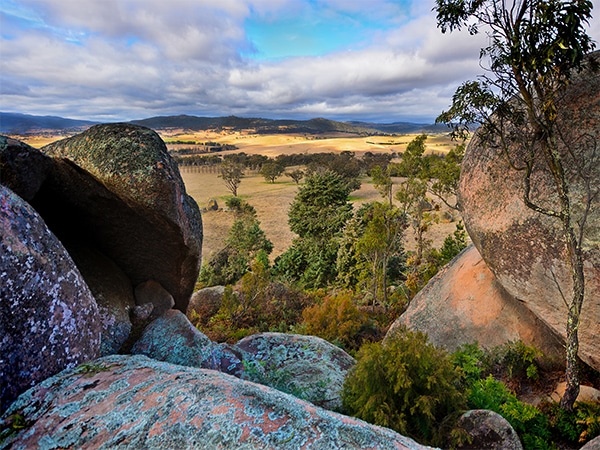
Escape to the country in Bathurst.
With a main street lined with lovely heritage Federation-era buildings that hint at a prosperous past courtesy of the local banana and sugarcane industries, the town of roughly 9500 inhabitants is now attracting visitors with the strength of its coffee and the reputation of its regional art gallery.
First, the coffee: for the best brew in town head to Keith, a funky cafe-cum-bar situated in a 70s-era arcade. It trades in studiously brewed coffee, sandwiches and sweets (with lots of gluten-free options) during the day, while at night the space transforms into a cosy bar.
At the opposite end of the arcade from the cafe is Keith’s Shop of Really, Really, Really Good Things, selling deli items, breads, coffee paraphernalia and illustrated tote bags that are a seriously cool souvenir of your visit.
Next, the art gallery: Tweed Regional Gallery & Margaret Olley Art Centre features a permanent collection and regular exhibitions by local artists. But the pièce de résistance here is the meticulous reconstruction of various rooms from celebrated artist Margaret Olley’s former home, including everything from books to furniture to crumpled chocolate wrappers placed exactly where she left them when she passed away in 2011.
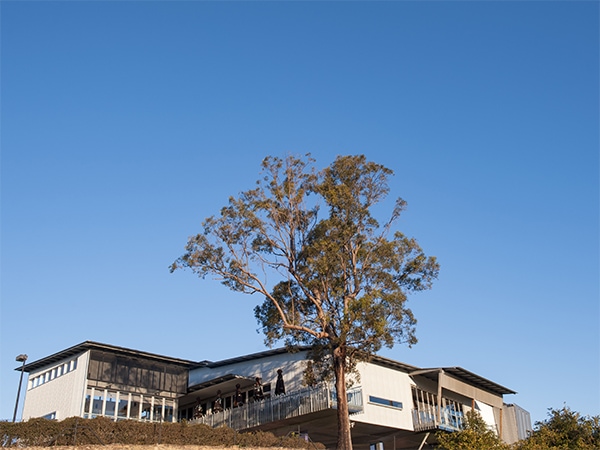
Discover coffee and culture in Murwillumbah. (Credit Destination NSW)
A rich history has bequeathed Bendigo a legacy of grand buildings, historic gardens, avenues and charming homes – making it a delight to explore – but it’s also a goldmine in terms of exceptional local produce. Wineries, craft brewers and boutique food producers abound, and there’s a gin dispensary, too.
What better way to delve deeper into this city than on tour with a local or two to discover the hidden delights from those who love and know the place best?
The freshly minted street art tours led by passionate artist and community organiser Nacho Station are the perfect way to discover the art that abounds. Beginning at Get Naked Espresso Bar, prepare to uncover a world of artistry around town and create some street art of your own. Alternatively, explore the Bendigo Art Gallery with a volunteer guide who’ll divulge the back stories of their favourite pieces.
Discover Bendigo’s culinary treasures on a Food Fossicking Tour with a constantly changing mix of producers. The tour starts at Mister Grimsby Coffee, for a local pastry and special siphon coffee brew. At The Good Loaf bakery, it’s all about using the best local ingredients to produce outstanding sourdoughs.
Decadence is next at Indulge Chocolates where chocolatier Hayley Tibbett will demonstrate how to temper and mould her Belgian couverture chocolates. Next, join chef Gina Triolo from Hoo-gah Cafe to make ricotta gnocchi from scratch. Finally, fill up at the Visitor Centre, sampling local wines and epicurean goods.
Bendigo’s Vintage Talking Tram is a perfect way to get acquainted with the town’s past. As you sit on polished timber seats in original carriages, the recorded commentary points out heritage buildings and landmarks.
Top it off with a guided tour through the refurbished Bendigo Town Hall. And for an in-depth exploration of the town, join Peter Hargreaves and Jill Hanlon on the two-hour Bendigo Walking Tour.
The 1860s Sandhurst Gaol, now houses the Ulumbarra Theatre. Knowledgeable volunteers will lead you through the gaol’s austere corridors, bringing stories of past residents to life.
Those into dark and dank will relish an underground tour of Central Deborah Gold Mine, which delivered nearly a tonne of gold during its 15 years of operation until 1954.
There’s plenty more to explore if time allows, including picking veggies from Peppergreen Farm; meeting the dragon at Golden Dragon Museum; dining at Malayan Orchid, El Gordo and Masons of Bendigo; local fare to-go at Bendigo Wholefoods; and spend the night at The Residence of Mackenzie Quarters.
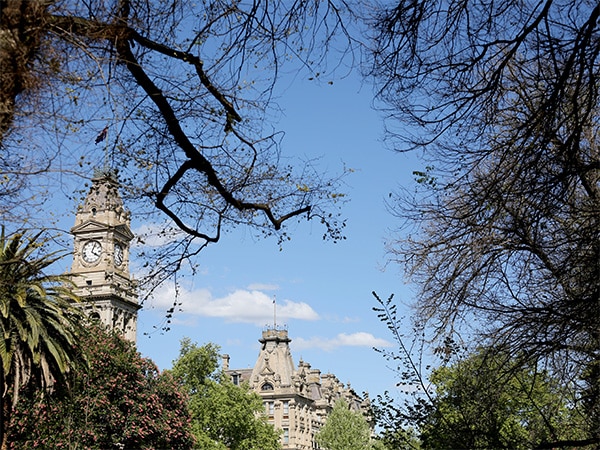
Wineries, craft brewers and boutique food producers abound in Bendigo. (Credit Christine Aldred)
Emirates One&Only Wolgan Valley, in NSW’s World Heritage-listed Greater Blue Mountains region, had no choice but to close temporarily due to surrounding bushfires late last year but its reopening brought with it a renewed sense of purpose.
As Australia’s first conservation-based luxury resort, Wolgan Valley prides itself on its symbiosis with, and respect for, nature and the environment. “We like to think we are the only place in the southern hemisphere that’s carbon-free as a resort,” general manager Tim Stanthorpe says over a lunch cooked open-air among the gum trees.
Everything on our plates is sourced straight from the chef’s garden or gourmet producers in surrounding communities. The property is set on almost 3000 hectares of nature and wildlife reserve.
Guests come here to relax in absolute wilderness: fine dining on seasonal fare, swimming in their own private pool or indulging with an organic spa treatment. But they also come to get out into that wilderness, whether on horseback, mountain bike or foot, and now – more than ever – by participating in the resort’s meaningful and wide-ranging conservation work.
After lunch, my small cohort sets off with activities and conservation manager Simone Brooks and field guide Kirra Tammjarv to plant trees. Other conservation activities guests can take part in include wildlife surveys, testing of water quality, feral animal monitoring and the mapping of significant trees to locate hollows, which provide homes for arboreal marsupials such as gliders and possums, and nocturnal birds, like owls, too.
My own experience today rewards as an uplifting and genuine way to connect to Wolgan Valley’s blissful landscape. We finish our task, dust ourselves down and return to the main homestead for a deck-side cocktail made with the resort’s signature 1832 Wolgan Gin. Distilled with purified water from the pristine Carne Creek and infused with hand-picked lemon-scented tea tree straight from the nature reserve, it’s the perfect way to clock off.
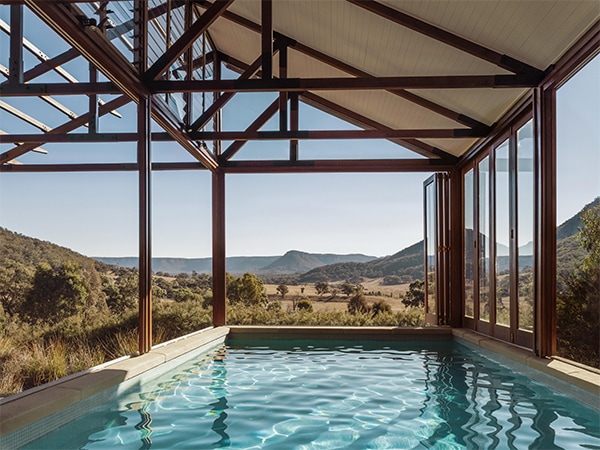
Embrace the natural wonders of Wolgan Valley in NSW.
For those who like their cities small and perfectly formed, these second cities offer up first-class exploration.
Launceston: Tasmania’s northern city is becoming ever more cosmopolitan. While traditional attractions such as Bridestowe Lavender Estate are still a strong pull for visitors, they are now being complemented with chic eateries such as Timbre Kitchen, Charlie’s Dessert House and Tasmanian Food & Wine Conservatory; boutique hotels – Change Overnight or The Florance; and headlining events including Festivale, showcasing the best of Tasmanian food, beverage and entertainment.
Albany: Located in south-west WA, make sure to visit the award-winning National Anzac Centre; in 1914, Albany was the final departure point for the first wave of ANZAC troops heading to the battlefields of the First World War. The city also offers stunning beaches, the natural wonders of Torndirrup National Park and diving the scuttled wreck of the Perth II. Visit the museum at Albany’s Historic Whaling Station, before taking a whale-watching cruise in King George Sound.
Fremantle: Visitors flock here to browse the historic markets (established in 1897), sip coffee on its bustling ‘Cappuccino Strip’ of South Terrace, eat fresh-off-the-boat seafood at its harbour and enjoy the laid-back waterfront lifestyle it is famed for – and it’s only a 30-minute drive from Perth.
Bundaberg: There’s a lot to recommend this city apart from the rum distillery. Head to Bargara to sample the wares of Bargara Brewery and dine at The Windmill Cafe. Check out cultural highlights like the brightly painted School of Arts, the Fairymead House Sugar History Museum and the Bundaberg Regional Art Gallery. Head to Mons Repos to see the turtle hatchings (November to March) and use the city as a base to explore the wonders of the Great Barrier Reef.
Albury: This pretty NSW border town (twinned with the Victorian town of Wodonga) boasts wide streets lined with historic Victorian, Federation and Art Deco buildings and houses that hint at a prosperous past. Spend time exploring the Murray Art Museum Albury and the Botanic Gardens; dine at local favourites like the River Deck Cafe in Noreuil Park and modern fine diner Bistro Selle; and shop at homegrown boutiques like Pour Mes Amis on Volt Lane and the monthly Twilight Markets.
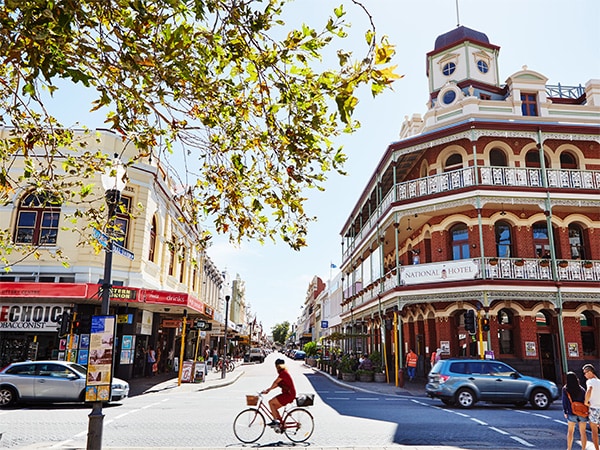
The first-class appeals of five second cities including Fremantle and more. (Credit Tourism Western Australia)
With more than 185 heritage-listed buildings, a characterful old train station that’s now a museum and the picturesque Avon River running right through it, Western Australia’s largest inland town, Northam, already had a lot to recommend a visit.
But the transformation of eight 38-metre-high grain silos into giant works of art in 2015 not only heralded Australia’s first silo mural and marked the start of a self-guided art trail that runs across the Wheatbelt, it had an energising effect on the town itself.
In 2018, Northam saw the opening of the Bilya Koort Boodja Centre for Nyoongar Culture and Environmental Knowledge, an architect-designed hub that celebrates the rich Aboriginal and environmental presence in the region.
And now, the town welcomes the complete revitalisation of the Farmer’s Home Hotel – a 190-year-old property that evolved from a wattle and daub hut into one of the most distinguished Federation hotels in regional WA.
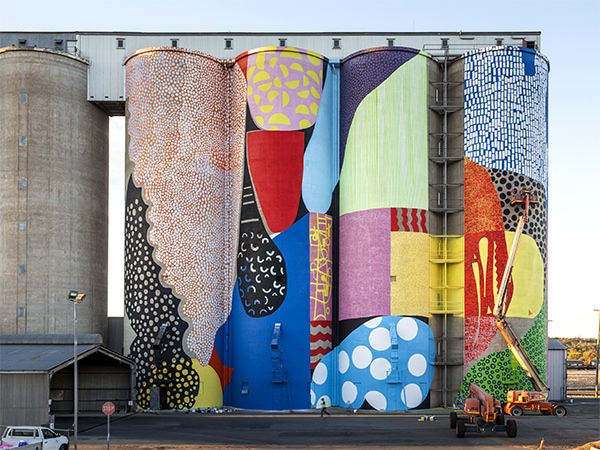
Discover old-school charm and new ideas in Northam. (Credit Bewley Shaylor)
Rising up to 1200 metres above sea level, Queensland’s Granite Belt region is home to some of Australia’s most dramatic scenery and offers surprises at every turn of the New England Highway between Stanthorpe and Tenterfield. Here, some absolute highlights of the southern end around Ballandean.
With its 11,800 hilly hectares of unique rock formations and hiking trails, Girraween National Park and neighbouring Sundown National Park offer some of the most rewarding walking locations. An alternative for a walk to see spectacular balancing boulders is at Bald Rock National Park adjoining Girraween, accessible from the NSW side of Tenterfield (entry fee applies). Here you’ll find the largest exposed granite rock in the southern hemisphere.
Close to Girraween at Wyberba there’s a small cluster of wineries. David and Lori Broadbent offer a range of reds and whites including a highly awarded reserve sagrantino at Balancing Rock Wines. Pyramids Road Wines focuses on low-volume handmade wines with a big range of grape varieties, with reds like mourvèdre and petit verdot prominent. Girraween Estate have won top awards for their shiraz cabernet and chardonnay. And they also produce fruit-driven, crisp and refreshing sparkling wines.
It’s not just about the wines of the Granite Belt. You’re very welcome to rock up to a brewery or distillery if that’s more your fancy: there are several choices including the boutique Brass Monkey Brew House, the closest to Ballandean; Granite Belt Brewery (with pub-style food, and comfortable cabin accommodation so you don’t need to drive).
Not far from Castle Glen you’ll find a spot called Donnelly’s Castle. You can squeeze through crevices in giant granite rock boulders, walk on top of them and enter into cave-like openings. The famed bushranger Captain Thunderbolt once used this rocky outcrop north of Stanthorpe as his hideout and it’s a hidden gem.
Now it’s time to pack your Esky full of the region’s fresh organic food and artisanal, hand-crafted products including, Sutton’s Juice Factory for natural juices and handmade apple pies; Ashbern Farms for strawberry picking and ice-cream; Stanthorpe Cheese for a great selection to accompany your wine purchases; Mt Stirling Olives for fruity, cold-pressed extra virgin oils; Jamworks Gourmet Foods for jams and relishes made from local produce; Anna’s Candles for soy-based scents; and Washpool Farm Soaperie for natural products and soap-making workshops.
Accommodation options include the Girraween Environmental Lodge, Wisteria Cottage and Girraween Country Inn.
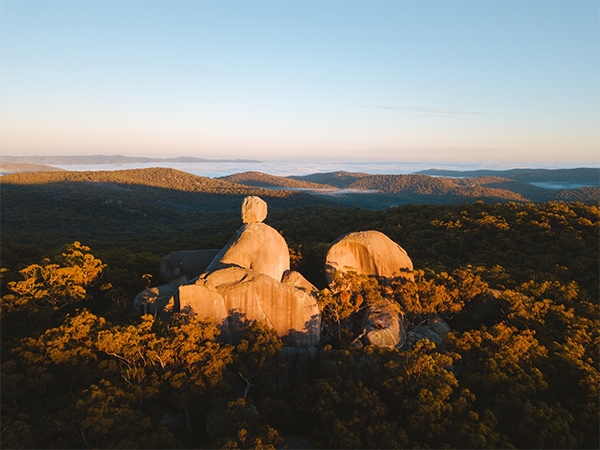
Rock on in the Granite Belt. (Credit Tourism and Events Queensland)
CABN’s off-grid getaways are much in demand and you’ll find them dotted around the outskirts of Adelaide in South Australia and in Victoria’s Yarra Valley. The 100 per cent sustainable custom cabins, with names like Chloe, Allira and Matilda, sleep three to four people, have composting toilets, rainwater catchment and solar power so conscious travellers can tread lightly during their stay.
CABN creator Michael Lamprell says the ethos behind the CABN philosophy is simple: it’s about placing these minimally designed spaces in some of Australia’s most stunning and stimulating landscapes to give people the opportunity to “disconnect from the crazy”.
There are also plans afoot for a number of sustainable eco-friendly tiny CABNs to be placed along the Cooloola Great Walk, on the Fraser Coast region in Queensland, about 250 kilometres north of Brisbane.
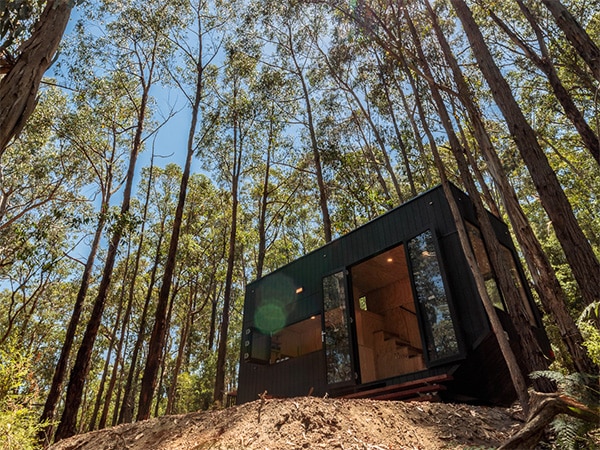
Go off-grid in a CABN tiny house.
LEAVE YOUR COMMENT